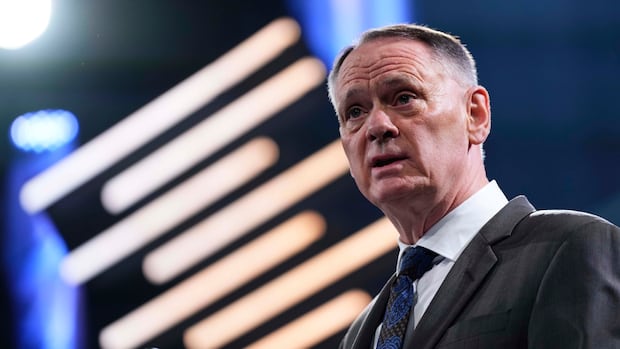NATO defence ministers have inched toward meeting U.S. President Donald Trump’s demand that members of the Western military alliance invest five per cent of their gross domestic product in their militaries and related defence infrastructure.
The ministers, meeting in Brussels on Thursday, approved what the allies call an “ambitious” set of new capability targets, which they believe will result in a “stronger, fairer, more lethal alliance” that will be ready to fight if necessary.
How to fund those targets will be the subject of debate when NATO leaders meet at The Hague, in the Netherlands, at the end of the month.
At the centre of the funding proposal is a call for allies to spend five per cent of their GDP on defence — 3.5 per cent on basic military capabilities and an additional 1.5 per cent of GDP on defence and security-related investments, including infrastructure and individual national resilience.

Canada is a long way from those benchmarks, according to NATO’s 2024 annual report, released in late April.
It shows the federal government spent 1.3 per cent of GDP on defence in 2023, and estimated that could increase to 1.45 per cent in 2024.
Going into the defence ministers’ meeting on Thursday, newly appointed Defence Minister David McGuinty was asked whether Canada intended to meet the new target.
“Canada is revisiting all of its expenditures presently, from top to bottom,” McGuinty told reporters. He pointed to the recent, planned $6-billion investment in a partnership with Australia to build an over-the-horizon radar system to monitor Canada’s Arctic.
Canada, under former prime minister Justin Trudeau, faced persistent criticism from allies for not meeting NATO’s current two per cent of GDP target. The backroom grumbling burst out into the open at last year’s leaders’ summit in Washington with members of the U.S. Congress publicly calling on Canada to pull its weight — a spectacle that prompted the Liberal government to promise to hit the target by 2032.
McGuinty wouldn’t commit to a timeframe for meeting the revised benchmark, but said Prime Minister Mark Carney will address Canada’s defence spending at the upcoming summit.
“The realistic timeline right now is to work towards the actual leaders’ summit in the Netherlands,” he said. “Our prime minister will be there and will be making announcements in this regard. Stay tuned.”
Pete Hegseth, the U.S. defence secretary, said Thursday that he believed almost all allies were on board with the notion of meeting the five per cent GDP goal in the next decade.
“I’m very encouraged by what we heard in there,” Hegseth told reporters during a media availability.
NATO Secretary General Mark Rutte has been pushing for the revised targets in what’s seen as an effort to placate Trump, but there has been uncertainty about when allies would be expected to meet the goal.
Media reports suggest the NATO chief expects members to reach the new goal by 2032. Poland is currently the only NATO country that exceeds the 3.5 per cent target for hard military spending at 4.32 per cent of GDP, according to NATO figures.
The United States, with the world’s biggest defence budget, spends 3.4 per cent of its GDP on the military.
